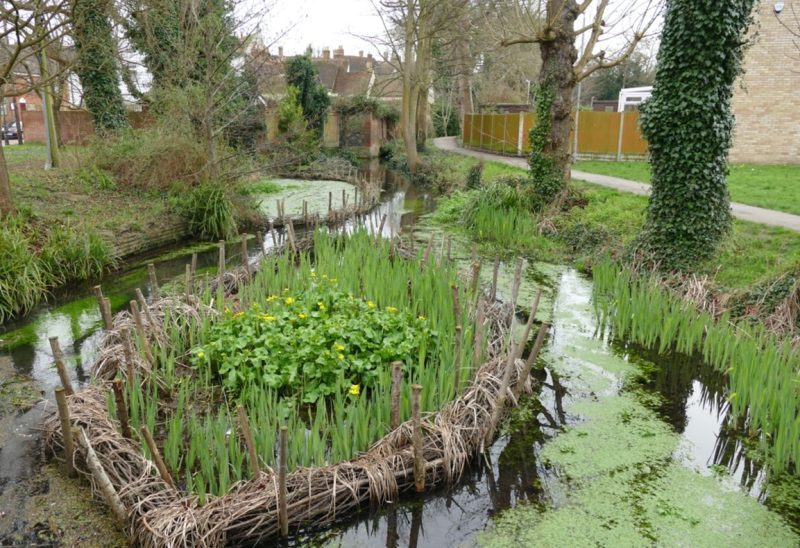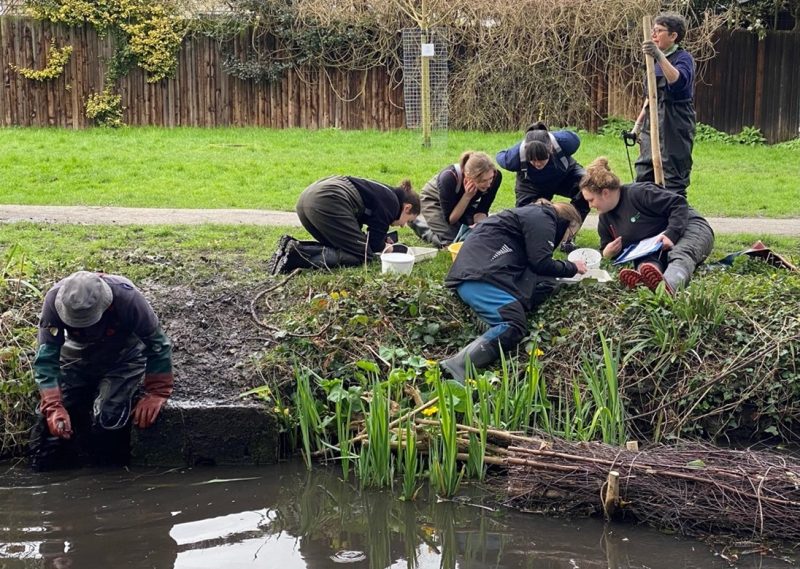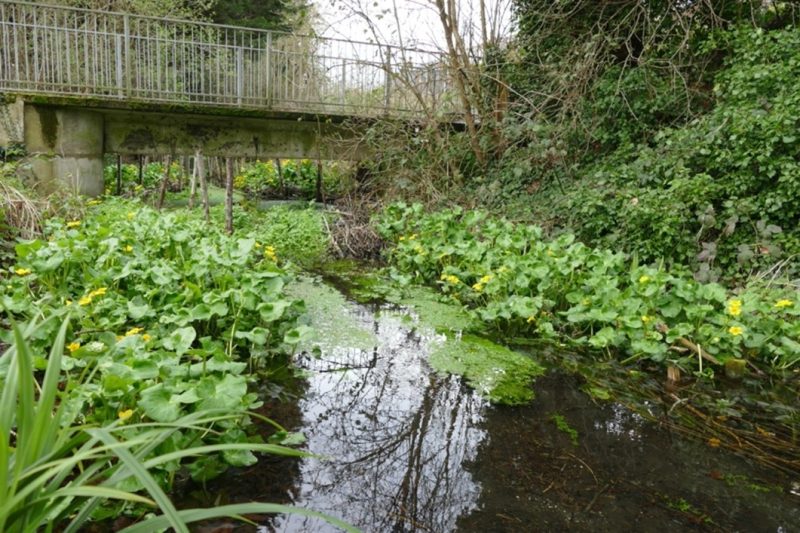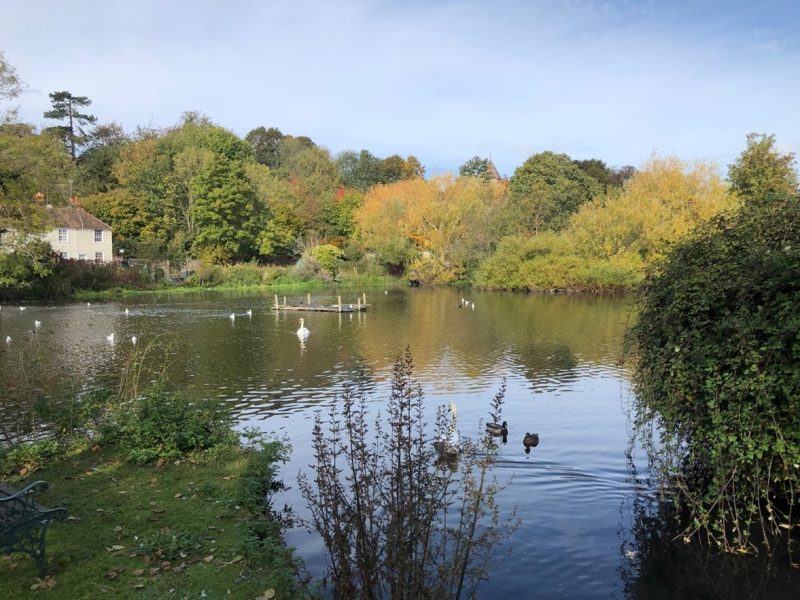Words Matthew Hatchwell & David Grzywacz Photographs Matthew Hatchwell & Tim Stonor
Anyone who has walked along the Westbrook between West Street and Chart Mill or near the footbridge between Beech Close and the Knole in recent years will have noticed the bundles of brushwood (“faggots”) that have been placed in some of the wider, slower flowing sections of the stream. The purpose of the faggot bundles is to concentrate the water into narrow channels whose more rapid flow prevents the accumulation of silt and helps to restore the original chalk stream character of the Westbrook.

The low-flow channels in the Westbrook south of the West Street culvert have created a new island for nesting birds and other wildlife. Marsh marigolds abound, ringed here by flag irises and thriving clumps of water crowfoot in the stream
The low-flow channels in the Westbrook south of the West Street culvert have created a new island for nesting birds and other wildlife. Marsh marigolds abound, ringed here by flag irises and thriving clumps of water crowfoot in the stream.
One of the features of chalk streams like the Westbrook is that, in their natural condition, they flow relatively fast over gravel beds that provide the ideal habitat for the wildlife species that make them so important for biodiversity. Changes made to the Westbrook over the centuries mean that the gradient of the streambed has been reduced and – especially in its lower reaches – a considerable volume of silt has accumulated. This has drastically altered the bed of the Westbrook with a build-up of silt and mud smothering the natural gravel bottom and driving out the unique chalk stream plants and animals it once supported. The problem of siltation has been compounded by the impact of water abstraction near the original course of the Westbrook south of Ospringe, which has reduced significantly the amount of water in the stream.

Ecological monitoring experts from the Environment Agency look for insects and other aquatic life in water samples from the Westbrook
Only about 300 chalk streams exist in the world, most of them in southern Britain. They provide a unique but threatened habitat for a distinctive range of plants and animals and must be protected and restored wherever possible.

The benefits of faggot bundling are already evident in the upper Westbrook where the original low-flow channels were created in 2017
Ecological monitoring of the Westbrook shows that the area of highest biodiversity is the short gravel-bottomed section downstream from the Chart Mill where the water flows fastest. Caddis fly larvae, for example, which are characteristic of chalk streams and intolerant of silt, are relatively abundant in that gravelly section but absent from the heavily silted ones closer to Stonebridge Pond.

Environment Agency working party helps the Friends of the Westbrook and Stonebridge install a new low-flow channel
Over time, low-flow channels in the stream will promote faster water flow, flushing out the silt and thus exposing the gravel streambed and enhancing biodiversity in the stream. The stream with its combination of faster meandering channels and still waters behind the faggots will create a wider mix of habitats enriching the stream’s diversity. Behind the faggots the still areas will become colonised by water plants such as marsh marigold, flag iris and water cresses binding the silt in these areas.
Chalk stream restoration and ecological monitoring on the Westbrook is led by the Friends of the Westbrook and Stonebridge Pond with support from a range of partner organisations. The Environment Agency has been particularly supportive in recent years with support for the installation of eel passes on the sluices between Stonebridge Pond and Faversham Creek; funding to support the creation of low-flow channels in the Westbrook and to conduct a study of chalk streams along the north Kent coast (see Faversham Life, January 5, 2024); advice on using citizen science to monitor water quality in the Westbrook and Faversham Creek; and most recently by providing hands-on assistance to extend low-flow channels to new sections of the stream.

Stonebridge Pond was formerly the millpond driving the waterwheels of the Home Gunpowder Works on the site of today’s allotments
The work of the Friends was recognised in 2022 with a Queen’s Award for Voluntary Service, the equivalent for community organisations of an MBE for individuals.